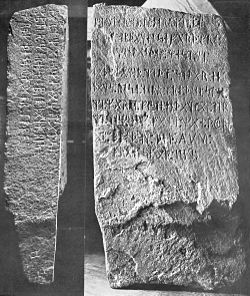
I'm curious: are there any believers in the authenticity of the Kensington Stone among active archeologists?
This is a runestone allegedly unearthed in the neighborhood of Kensington, Minnesota in 1898.
The inscription says that it was left there by Scandinavian explorers, "Vikings" if you will, on an expedition in the 14th century.
Although there is solid evidence for Norse settlements along the northeastern coast of the US and the Maritime Provinces of Canada, there is no OTHER evidence (aside from this stone) that they ever got anything like THAT far west.
One is naturally inclined to think that such an outlier is a fraud.
But I'd like to know if it is still an open question.
Of course they got that far west. If they hadn't, then how could we have the Minnesota Vikings?
ReplyDeleteSeriously, why did Minnesota choose that name for its football team? Is there some connection between the state and the Vikings? (Not that I really care.)
In the mid 19th century there was apparently a disastrous crop failure in Norway. Lots of Norwegians headed to America, most of them at first settling in Illinois and Wisconsin, because cheap farmland was available and the soil was amenable to the same crops that grow in Scandinavia. A westward move of much of that population into Minnesota (and to some degree to Dakotas) came later in the century, because for some odd reason the original inhabitants of the area conveniently disappeared around that time.
ReplyDeleteThe prevalence of Andersons, Olsons, etc. in the upper Plains led to the adoption of team names like the Vikings. And if you believe the Kensington Stone is a fraud, you might also posit that a sense of ethnic identification was a part of the motivation for it.